337 Search Results for communication boards
December 1, 2015
by Carole Zangari -
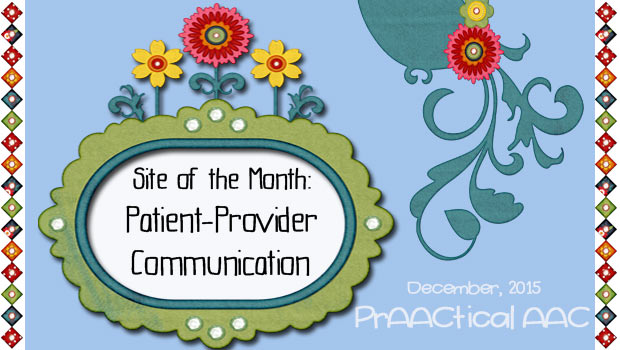
Doctor appointments, feeding tube placement, ear check, blood pressure, suctioning, IV medication, oxygen through a nasal cannula, trach changes, blood work No matter what the age or type of disability, almost all AAC learners face the challenge of communicating effectively during encounters with healthcare professionals. People with AAC needs are among those who are considered to be communication vulnerable and do best when there are planned supports in place. The Patient-Provider Communication (PPC) website hosts projects and resources to improve interactions between people with communication challenges and their healthcare providers. It is also the online home to a group of professionals across the globe who share information and collaborate to improve communication at physician offices, clinics, emergency rooms, acute care and rehabilitation hospitals, intensive care units, home health services, and hospice facilities. It is funded by the Central Coast Children’s Foundation and directed by AAC pioneer Dr. Sarah Blackstone and... [Read More...]
June 17, 2015
by Carole Zangari -
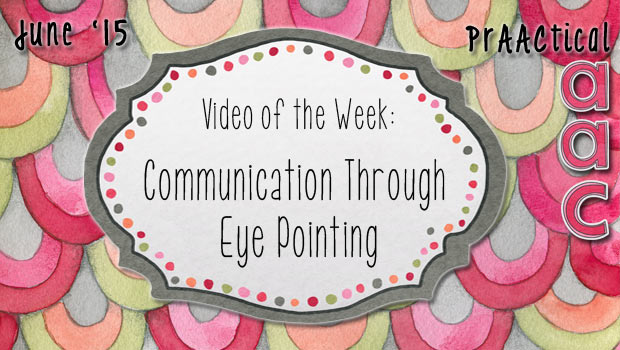
When people have significant motor impairments, finding a sustainable way for them to select and convey messages is a challenging task. This week, we turn to the ALS Association of Iowa for two wonderful videos on how to use ‘no tech’ eye gaze boards for communication. Direct Links to Videos Etran https://www.youtube.com/watch?v=LLkpRbUQzVo Eye Link https://www.youtube.com/watch?v=eHyXCcS38XM
April 30, 2015
by Carole Zangari -
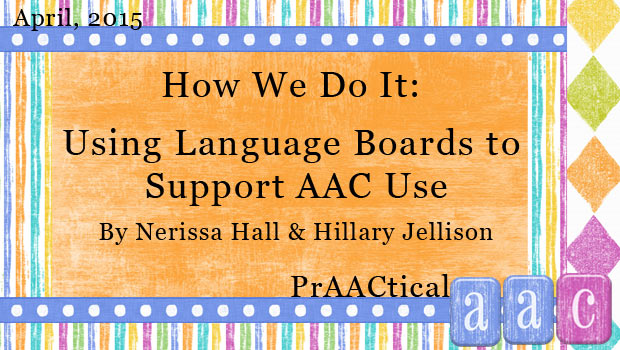
Many of you have reached out to say how much you’ve appreciated the prAACtical suggestions provided by Nerissa Hall and Hillary Jellison, New England-based SLPs and owners of Commūnicāre, LLC. We’re excited to have them back, especially because they are talking about something near and dear to our hearts: Implement a core vocabulary approach in their AAC therapy. In this post, they give us a peek into the ‘why’ and ‘how’ of making and using communication boards that are rich in core words. In their typically generous fashion, they also share templates for the boards that they make. How We Do It: Using Language Boards to Support AAC Use There are a number of different strategies one can use to support an individual’s use of augmentative and alternative communication (AAC). We know that aided language stimulation, augmented input, and AAC modeling are important and effective ways of supporting AAC use. By using... [Read More...]
January 26, 2015
by Carole Zangari -
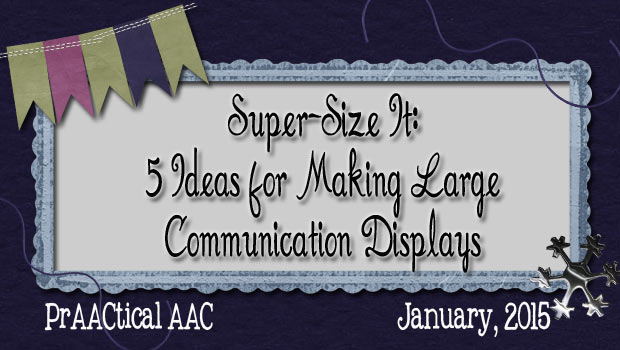
One of the coolest things about 2014 was that it seemed like the field of AAC reached a tipping point regarding the idea of aided language input. There are some differences in terminology (e.g., aided language stimulation, aided modeling), but the Big Idea is this: To teach AAC, be a speaker of AAC. Learners need competent language models, and if we’re not using the AAC ourselves, chances are that no one else is easier. If you don’t think that’s a problem, try learning a foreign language from a teacher who doesn’t speak it to you. Not the most enjoyable, effective, or efficient way to learn. I had such a great visit to schools in Oakland, Michigan this fall, and one of the (many) highlights was being in classrooms where teachers and SLPs are taking this to heart. True, they have some great AT leadership and had lots of training, but... [Read More...]
July 14, 2014
by Carole Zangari -
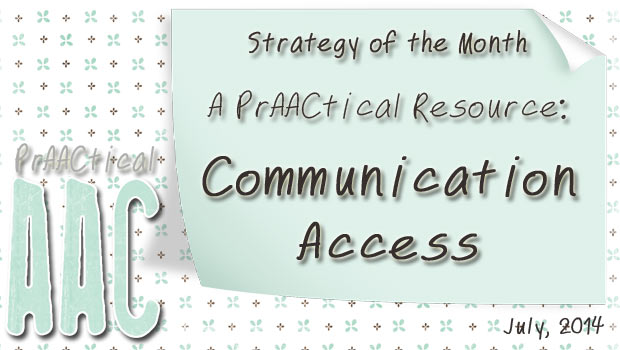
There are some organizations and projects that just amaze us with the work that they do. Today, we are looking at one of those, Communication Disabilities Access Canada, led by Barbara Collier. They have a wonderful array of resources that address important topics related to safety, self-determination, advocacy, and more. Here are two of our favorites. Communication Boards Making and Using Communication Access Cards You can follow them on Facebook, too.
March 17, 2014
by Carole Zangari -
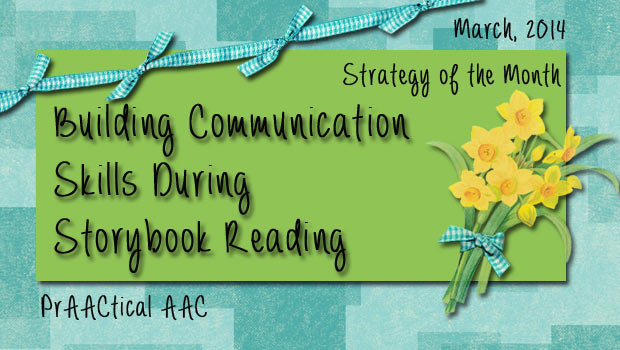
In this post, we continue to explore strategies for advancing the literacy experiences of people who use AAC. Today, we’ll look at a strategy used in the research of Drs. Cathy Binger and Jennifer Kent-Walsh. What is a little different about this strategy is that it uses literacy experiences, specifically storybook reading, to build communication skills. One component of their research focuses on an interactive reading strategy called RAAP: Read, Ask, Answer, Prompt. There is lots to love about this approach, but one of our favorite things is that is makes heavy use of aided language input, an intervention strategy that is critical for partners of beginning communicators to use. You can read more about aided language input and see videos here. It also gets partners using language expansions and extensions, an intervention strategy that is effective for communicators at many levels of proficiency. Finally, we appreciate the frequent use of... [Read More...]
February 19, 2014
by Carole Zangari -
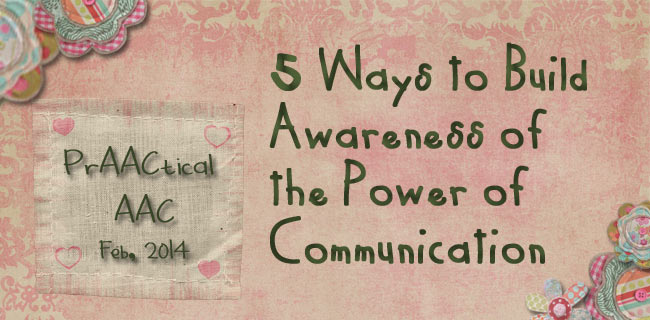
Awhile back I helped a graduate student clinician lead a session with some children who do not yet have AAC systems in place. Communicating with pictures is hard for them and doesn’t yet make sense. They haven’t connected the dots to see that when they use these picture-based materials, they can influence the environment in a way that makes their lives more interesting and fun. Our first step was to help them begin to understand that they could control aspects of their environment. Here are some things we did to help the AAC learners feel the power of communication. 1. Made communication easy: Talking switches and sequential communicators are great ways for learners to get a big payoff with little effort. In classrooms where there was no functioning technology, we used free apps for mobile devices and paper-based communication boards. 2. Made the response big and fun: Think silly,... [Read More...]
January 23, 2014
by Carole Zangari -
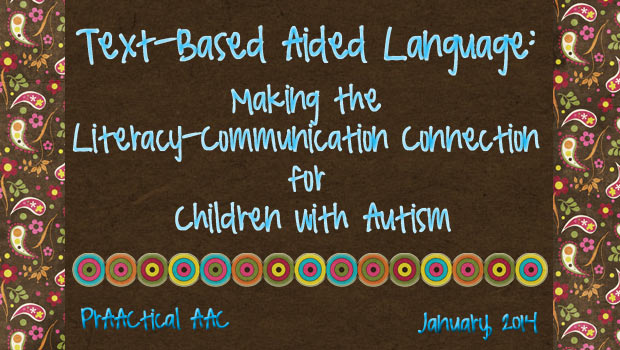
We are so pleased to have this guest post by Alicia Garcia. She is the lead SLP at AAC Clinic at One Kids Place, in Ontario. You can read her previous post here. Today, Alicia takes us in a textual direction. Enjoy! When working with children with autism who have complex communication needs we have found it is not uncommon to see children who, despite having significant communication and language challenges, can read and sometimes type words. Their ability to decode written words is far superior to their ability to communicate their wants, needs and thoughts. Some of these children use AAC systems for their face-to-face communication and, in some cases, have a literacy program in place; they frequently have handy access to writing or typing tools. These children do not, however, use text to communicate with people. They have not made the Literacy-Communication connection. We wonder… how do we help these... [Read More...]
May 30, 2013
by Carole Zangari -
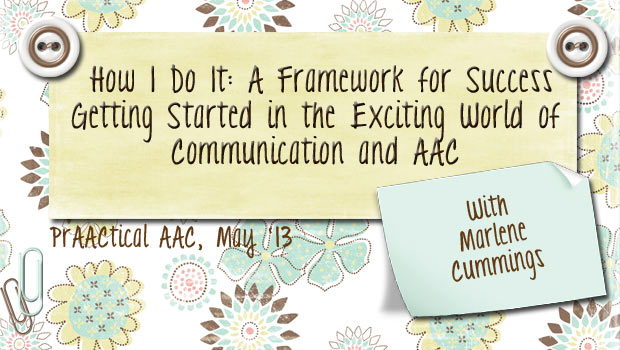
We couldn’t be more excited to have a return visit from Marlene Cummings, a wonderful SLP who is currently serving as an AAC Consultant to the AAC Team at Oakland Schools. In her first post, Marlene talked about strategies for cultivating the right mindset for AAC teaching. In this post, Marlene continues sharing elements of her Framework for Success in discussing the Knowledge Toolbox, developed with the Oakland Schools AAC Team. 5 Things in Your “Knowledge Toolbox” What is already in my “knowledge toolbox” of communication, language and learning? Yes, you do have a full toolbox. You just don’t realize it. And of course there are always new and exciting things to add. You already know this stuff!! REMEMBER??? It is important to step back and think broadly about communication and what it really does. Sometimes we get caught in the details of our work and can’t see the forest through the... [Read More...]
May 21, 2013
by Robin Parker -
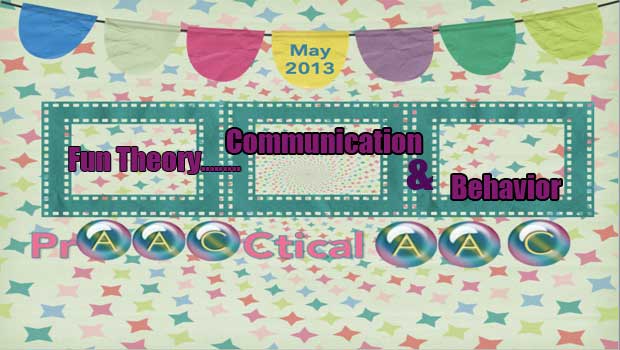
Please excuse this somewhat tangential post because it really relates to communication and language learning….. Fun and communication go together. Meaningful (and fun) communication and language activities can often make the difference between a disengaged passive learner and a participatory, engaged, and excited learner. We have talked about many picture symbol communication boards, but there are also tangible and tactile communication boards that have been essential for learners that have vision impairments as well as those who have difficulty discriminating between picture symbols. While exploring a variety of communication boards, we came across Adaptive Design Association Inc. Adaptive Design Association Inc. reminds and teaches us about the role of appropriate customized adaptions to allow for authentic communication, developmental, social, and academic learning (who knew what you could do with cardboard?). Within our search through adaptive design, there was a link or connection to the fun theory. Fun can change behavior for EVERYONE and... [Read More...]









